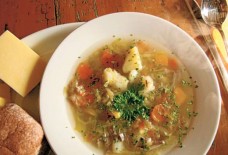How Palestinian protesters helped Black Lives Matter
Surviving tear gas became essential to BLM. Lesson was just one way Millennials used social media to cross global divide
“Always make sure to run against the wind/to keep calm when you’re teargassed, the pain will pass, don’t rub your eyes! #Ferguson Solidarity.” Activist Mariam Barghouti tweeted that during one of the most dangerous nights of protests and intense police confrontation in Ferguson.
Barghouti, a Palestinian-American journalist and translator from the West Bank, immediately saw a link between young black protesters in a small suburb near St. Louis and Palestinians who had also resisted state violence half a world away.
“The connection between the African American community and Palestine is essential for human rights. It reminds us all that oppression has no boundaries and despite the differences our struggles are united,” Barghouti said recently. “No justice is true justice without the liberation of all.”
That connection took Black Lives Matter to the Middle East just a little more than a month ago to talk to Palestinians who had not only sent advice via Twitter, but had at one point joined them in Ferguson. Members of BLM teamed with Dream Defenders, a liberation organization that fights for, among other things, an end to wars of aggression all over the world. The delegation met with grassroots organizations in Ramallah, Jerusalem and Haifa to develop a deeper understanding of the Palestinian struggleand to figure out how their fight parallels that of blacks in the U.S.
For Millennials, platforms like Twitter have facilitated global connections that help activists participate in worldwide demonstrations that often emanate from similar violence and oppression.
The delegation that went to the Middle East attempted to “build real relationships with those on the ground leading the fight for liberation,” said Ahmad Abuznaid, the chief operating officer of Dream Defenders who organized the trip.
In the days following the August 2014 death of young black male Michael Brown at the hands of white officer Darren Wilson, civil unrest and police brutality in Ferguson reached a crescendo. Officers wore riot gear. Area residents were placed under a curfew. Police shot tear gas into crowds. Protesters were arrested.
That summer, Palestinians suffered violent exchanges under Operation Protective Edge, during which Israel launched attacks on the Gaza Strip in an attempt to end Palestinian rocket fire, according to reports. Many of their homes and businesses were obliterated. It was against this backdrop that Palestinians shared advice with people in Ferguson.
Among the many other tweets that came during those protests was one from Rajai Abukhalil, who describes himself on Twitter as a Palestinian doctor and activist: “It is always the oppressed caring for the oppressed no matter where in the world. #Palestine stands with #Ferguson.”
Policing methods in Ferguson and during many high-profile protests that followed looked like scenes from war zones in the Middle East and other police states where law enforcement uses abuse and intimidation to bring order. The American Civil Liberties Union stated that “the predominately white local and county police responded to the largely peaceful protests in the overwhelmingly African-American community with a show of force that left Americans wondering whether they were watching events unfold on the streets of suburban St. Louis or on the streets of an authoritarian country.”
“The solidarity between the African American community and Palestinians acts as a unified front against the selectivity and exclusivity of human rights,” the Palestinian protester Barghouti said. “Oppression is perpetuated by the divide-and-conquer strategy, so the … union between the African American community and the Palestinian struggle breaks this sinister endeavor and brings us closer to justice.”



